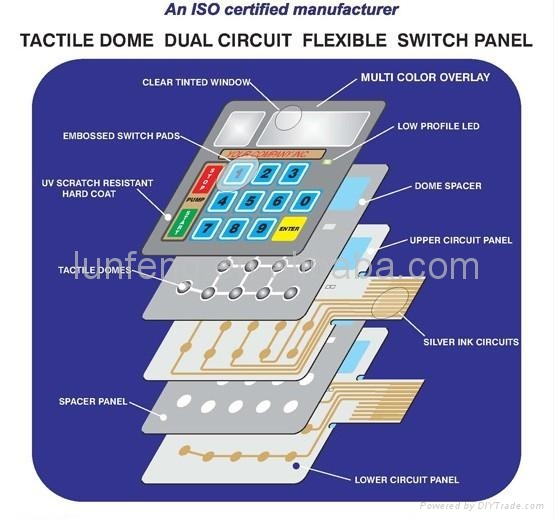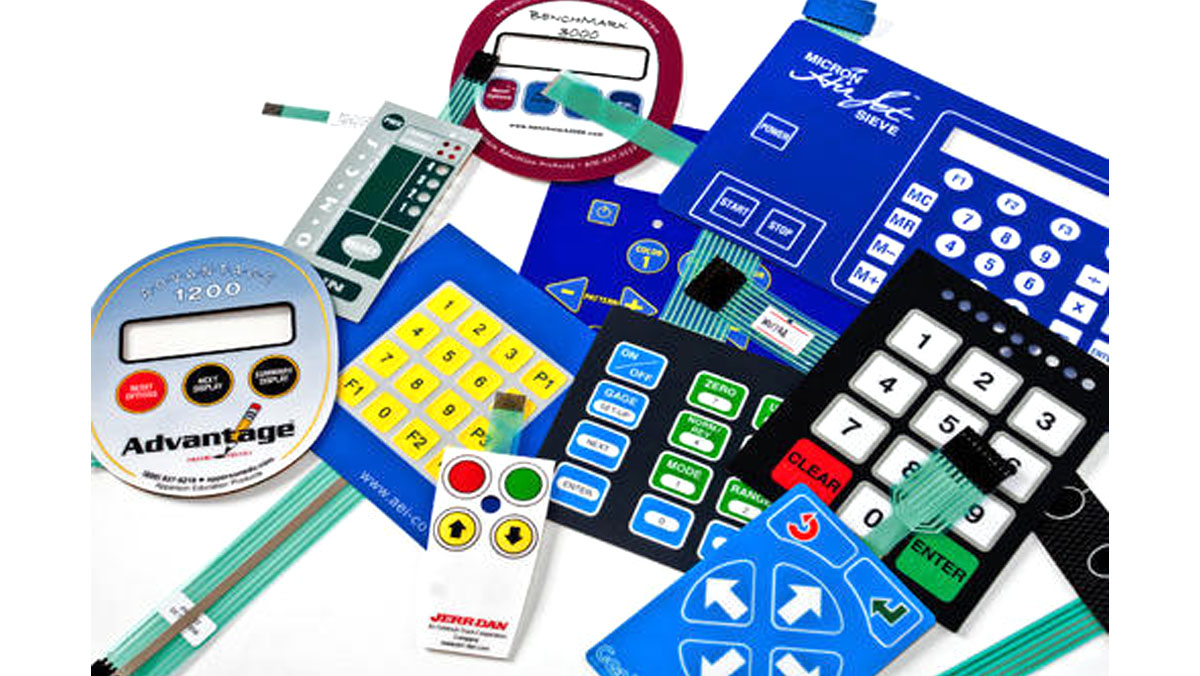Comprehending Membrane Switches: The Trick to Trusted and resilient Controls

What Are Membrane Layer Switches?
Membrane layer switches are a sophisticated remedy in the realm of individual interface technology, incorporating performance and style seamlessly. These tools function as an interface in between users and digital systems, incorporating numerous elements into a compact layout. Typically constructed from flexible, thin layers of products, membrane buttons are made to reply to touch, enabling users to connect with equipment and digital gadgets properly.
The primary components of a membrane switch include a published circuit layer, visuals overlay, and a spacer layer that protects against unplanned activation. The visuals overlay can be tailored to reflect brand name identity or user choices, improving aesthetic appeals while making certain functionality. Membrane layer buttons are typically utilized in various applications, including medical gadgets, customer electronic devices, and industrial devices, owing to their durability and resistance to environmental variables such as wetness and dirt.
Among the essential advantages of membrane layer buttons is their capability to stand up to deterioration, making them perfect for high-traffic atmospheres. Additionally, they are lightweight and call for very little area, enabling innovative layouts in item development. Overall, membrane changes stand for a effective and practical choice for modern digital user interfaces, marrying innovation with user-centric design principles.
How Membrane Layer Changes Job
The operation of membrane layer changes depend upon a basic yet effective mechanism that equates user input into electronic signals. These buttons contain numerous layers, commonly including a graphic overlay, a spacer layer, and a circuit layer. When a user presses the button, the leading layer flaws, enabling a conductive component in the circuit layer to make call with an equivalent conductive pad on the underside of the visuals overlay. This contact closes the circuit and sends an electronic signal to the tool, suggesting that the switch has actually been turned on.
The design of membrane layer buttons can vary, but they often incorporate domes or tactile aspects to provide comments to the customer, enhancing the total experience - membrane switch. The products utilized in membrane switches, such as polyester or polycarbonate, add to their toughness and resistance to ecological elements, consisting of moisture and dirt. Additionally, the printed circuits are normally encapsulated, which safeguards them from damage in time.
Advantages of Membrane Switches

In addition, membrane layer switches are recognized for their durability. Constructed from durable products, they are immune to dirt, dampness, and physical wear, which significantly expands their lifespan contrasted to typical mechanical switches. This sturdiness makes them especially appropriate for high-traffic atmospheres and applications requiring long life.
An additional significant benefit is the ease of cleansing and upkeep. The smooth surface of membrane layer switches decreases dirt buildup and is typically unsusceptible spills, making them perfect for setups that call for frequent sanitization.
Moreover, membrane layer buttons supply a structured account, resulting in a thinner design that can be integrated into numerous devices without adding mass. This function not only improves the visual charm yet likewise contributes to a much more ergonomic item style.
Applications of Membrane Layer Buttons
Versatile and user-friendly, membrane buttons discover applications throughout a wide variety of sectors, including medical tools, customer electronics, and industrial tools. In the clinical area, these buttons are important to gadgets such as analysis equipment, individual monitoring systems, and mixture pumps, where dependability and convenience of cleaning are crucial. Their capacity to hold up against extreme environments and preserve performance makes them excellent for such applications.

In consumer webpage electronics, membrane layer switches are utilized in items like microwaves, cleaning machines, and push-button link controls - membrane switch. Their streamlined design enables for instinctive interface, enhancing the total customer experience while offering durability and resistance to tear and put on
Commercial equipment likewise profits from membrane layer buttons, particularly in control panels for machinery and automation systems. These buttons offer protection against dust and dampness, ensuring consistent performance in difficult settings. Furthermore, their customizable functions enable manufacturers to tailor them to certain functional needs, improving efficiency and performance.
Choosing the Right Membrane Change
When picking a membrane layer button, it is important to consider various factors that affect performance and suitability for details applications. The primary factors to consider include environmental conditions, responsive feedback, longevity, and layout specifications.
First, evaluate the operating atmosphere; switches exposed to dampness, chemicals, or severe temperatures require specific materials to guarantee longevity and capability. Next, evaluate the demand for responsive responses. Depending upon individual communication, some applications might benefit from a responsive action to confirm activation, while others may choose a non-tactile layout for visual reasons.
Durability is an additional important element; membrane buttons ought to be made to stand up to regular usage, impacts, and abrasion. Make sure the chosen switch can sustain the expected lifecycle, specifically in high-usage situations.

Conclusion
In final thought, membrane layer changes serve as crucial elements in the design of trusted and resilient control systems throughout different markets. The convenience of membrane switches over allows for tailored options that fulfill details operational needs, strengthening their value in modern technology.
Membrane changes stand for a crucial element of contemporary user interface layout, blending functionality with resilience in various applications.Membrane switches are an advanced service in the realm of individual interface modern technology, incorporating capability useful content and layout seamlessly. Generally built from flexible, thin layers of materials, membrane switches are designed to react to touch, making it possible for customers to connect with equipment and digital gadgets successfully.
The style of membrane switches can differ, yet they usually include domes or responsive components to supply feedback to the individual, enhancing the overall experience.In conclusion, membrane layer switches over serve as crucial parts in the style of trustworthy and long lasting control systems across numerous markets.